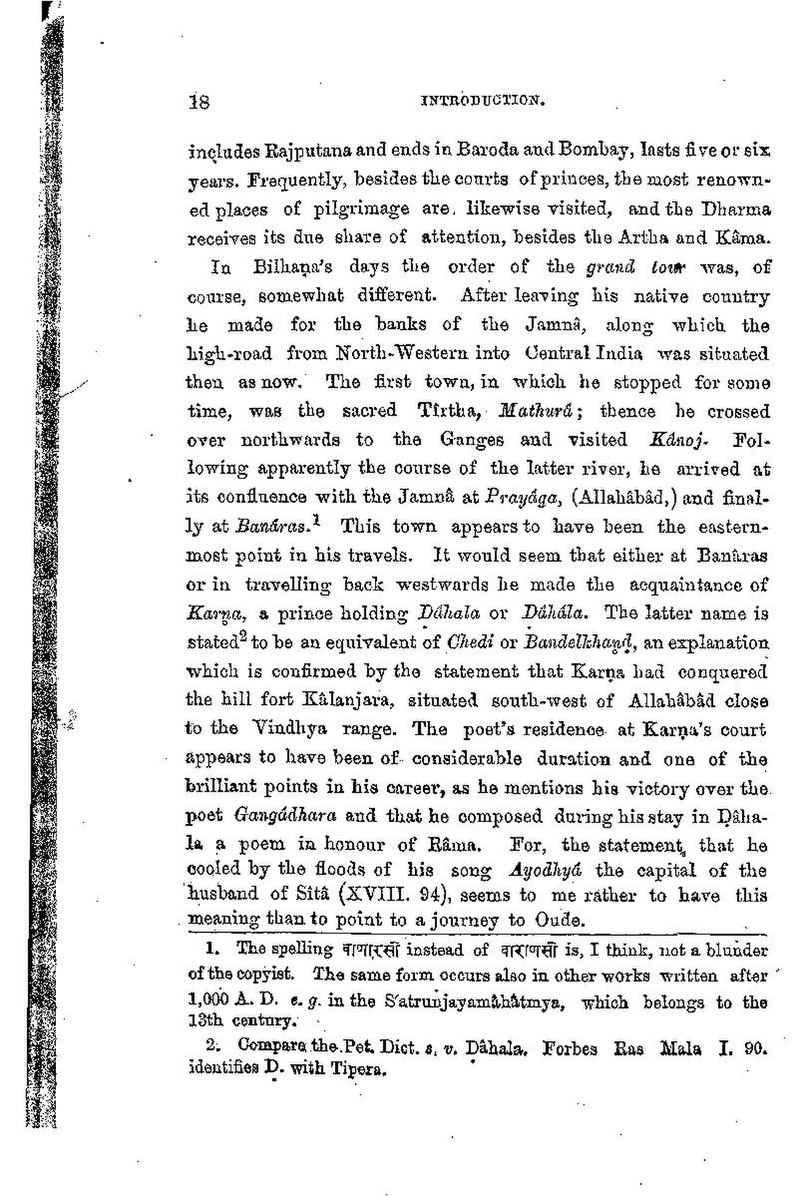18
INTRODUCTION.
includes Rajputana and ends in Baroda and Bombay, lasts five or six
years. Frequently, besides the courts of princes, the most renown-
ed places of pilgrimage are. likewise visited, and the Dharma
receives its due share of attention, besides the Artha and Kâma.
In Bilhana's days the order of the grand tour was, of
course, somewhat different.
After leaving his native country
he made for the banks of the Jamnâ, along which the
high-road from North-Western into Central India was situated
then as now. The first town, in which he stopped for some
time, was the sacred Tirtha, Mathurá; thence he crossed
over northwards to the Ganges and visited Kdnoj Fol-
lowing apparently the course of the latter river, he arrived at
its confluence with the Jamnâ at Prayaga, (Allahâbâd,) and final-
ly at Banáras. This town appears to have been the eastern-
most point in his travels. It would seem that either at Banaras
or in travelling back westwards he made the acquaintance of
Karna, a prince holding Dáhala or Dáhála. The latter name is
stated to be an equivalent of Chedi or Bandelkhand, an explanation
which is confirmed by the statement that Karpa had conquered
the hill fort Kalanjara, situated south-west of Allahâbâd close
to the Vindhya range. The poet's residence at Karna's court
appears to have been of considerable duration and one of the
brilliant points in his career, as he mentions his victory over the
poet Gangádhara and that he composed during his stay in Dâha-
la a poem in honour of Râma. For, the statement, that he
cooled by the floods of his song Ayodhya the capital of the
husband of Sita (XVIII. 94), seems to me rather to have this
meaning than to point to a journey to Oude.
1. The spelling TT instead of arra is, I think, not a blunder
of the copyist. The same form occurs also in other works written after "
1,000 A. D. e. g. in the S'atrunjayamahatmya, which belongs to the
13th century.
2. Compare the.Pet. Dict. s. v. Dâhala. Forbes Ras Mala I. 90.
identifies D. with Tipera.
पृष्ठम्:विक्रमाङ्कदेवचरितम् - बिल्हण.pdf/२२
एतत् पृष्ठम् अपरिष्कृतम् अस्ति

